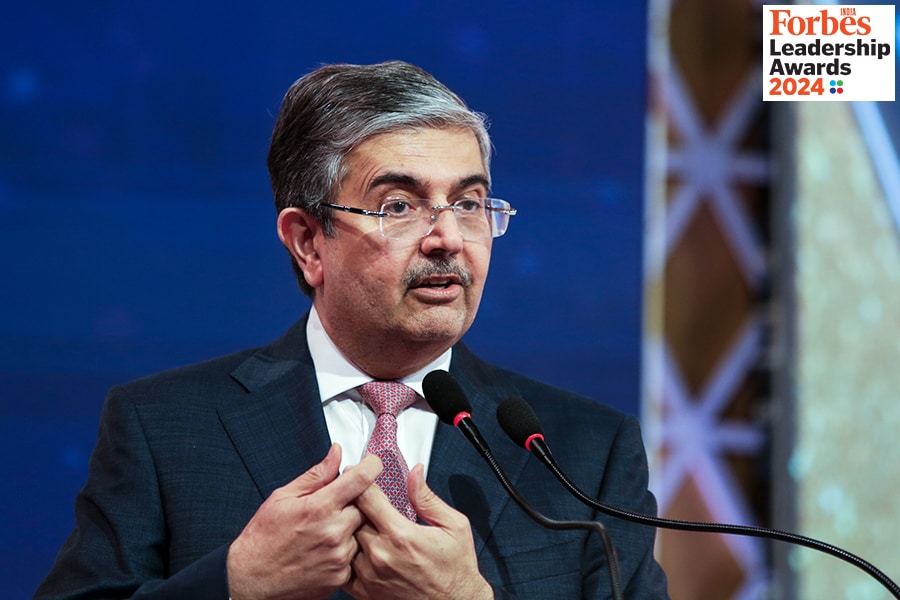
India needs more discipline and world-class financial institutions: Uday Kotak at FILA 2024
The future of finance will be risk management, powered by technology. Tech companies will need to better manage risks and returns, which traditional finance companies have been good at
 Uday Kotak, Founder and Director, Kotak Mahindra Bank
Image: Forbes India
Uday Kotak, Founder and Director, Kotak Mahindra Bank
Image: Forbes India
Veteran banker and billionaire Uday Kotak envisages a future of finance for India, where financial institutions will have to become world class and will have to re-imagine themselves to be able to exist in two worlds of finance: The saver-borrower model and the investor-issuer model.
“India should aspire to be like the US; we will have to build deep capital markets in addition to traditional banking,” Kotak told a large gathering of industrialists, entrepreneurs and private equity investors in his keynote address to kickstart the 13th edition of the Forbes India Leadership Awards (FILA), held in Mumbai last week. The US is the only economy that has successfully run the investor-issuer model.
“Europe is still more traditional, [dependent] on banks and so is the Asia-China region,” Kotak said in his speech on the ‘Future of Finance’, prior to receiving the ‘Institution Builder’ award from an independent jury, who chose the winners for FILA 2024.
Kotak, who stepped down in September 2023 as the MD and CEO of India’s fourth largest private sector bank by market capitalisation, has built a successful financial services empire over the past three decades. He envisages a scenario where India could become one of the top two economies of the world over the next 20-25 years.
“We will go to third place in the next 5 years but the move from third to second will need a little more hard work,” he said. He highlighted the fact that in his early days as a banker, India was dependent on the saver-borrower model, where individuals would save money and put it in a bank deposit; with the bank lending the money later.








